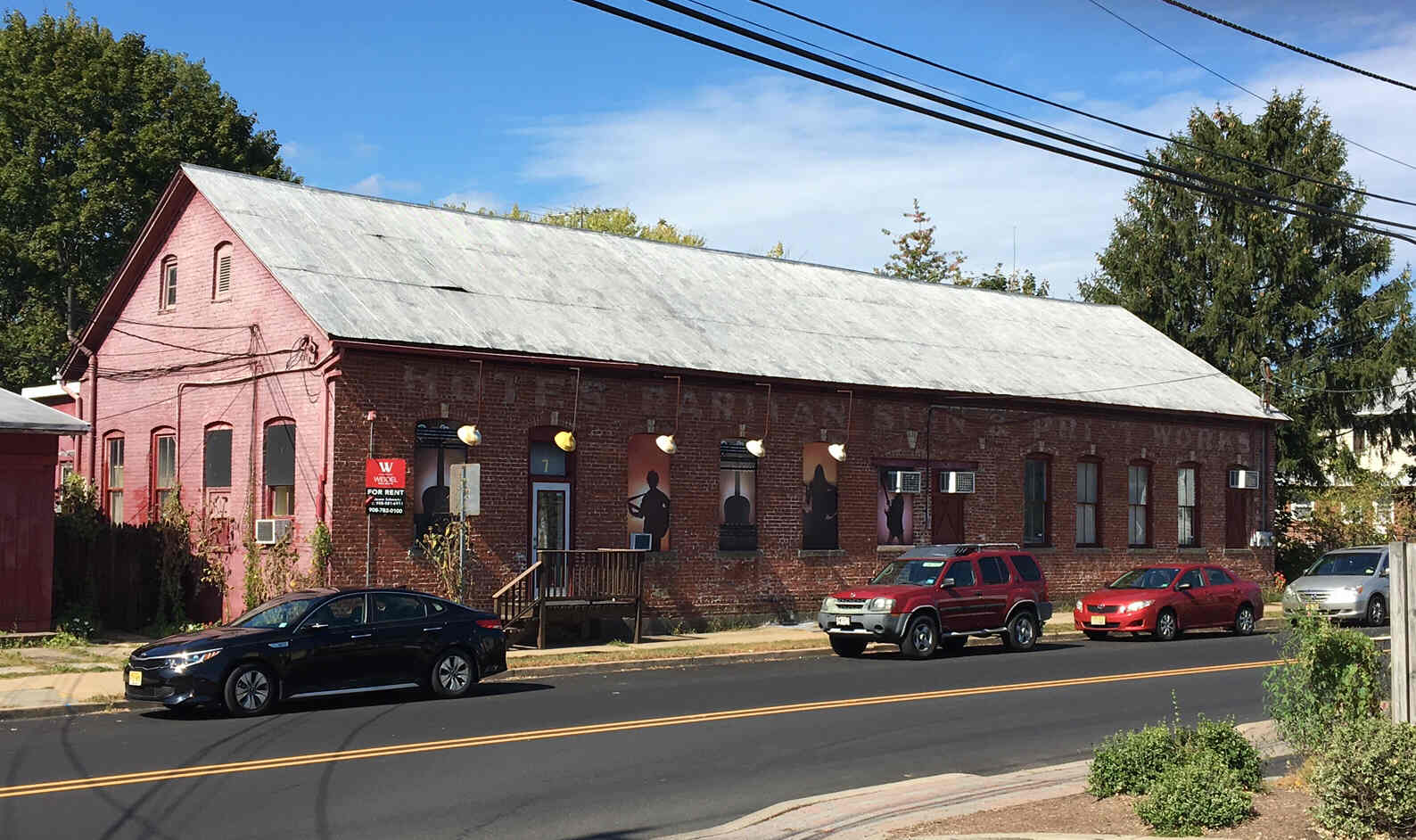
Three places were deemed possible - the falls at the Passaic, the falls at Delaware, and the Raritan River west of Somerville. (It is not known if Hamilton himself ever stood on the banks of the river here in Raritan to judge the feasibility of the project, but it is known that he had been to this area before as he had attended a meeting at the Wallace House in Somerville in 1779.) While Raritan did not get chosen by Hamilton’s group, it had been identified as a future location that would be ideal for industry.

In the early years many factory businesses appeared on the banks of the river. Some of the early ones listed in history publications are the “James Screw Company” which stared in 1841, a “Rope and Bagging Company” in 1845 and two flour mills. Some of the factories would last a few years - several would last a few decades or more.
the Raritan Woolen Mills

Kenyon Machinery, which had initially started in Belvidere, moved to Raritan around 1846. They manufactured all kinds of mill and farm machinery. (They would be known over the years by different spelling - Kenyon and Kinyon - and the name varied from Kenyon Co. to Kenyon Brothers to D.R. Kenyon.) This business survived and would employ many local people – one historical reference says 40 workers.
Two of the owners - Job Kenyon and David R. Kenyon - sons of the founder David P. Kenyon – took over the business in 1867. They would be productive citizens in Raritan. They built and occupied two of the large houses on Somerset Street (by today’s Basilone Statue). These impressive homes still stand today. Job Kenyon would serve as the fire chief of Raritan for several years. A photo of him proudly hangs in the North Thompson Street Firehouse today.

Their buildings on the Raritan River were later occupied by “United Dyes”. A few years ago a fire badly damaged the main building and it is still in ruins. Remarkably a photo of the Kenyon Complex from 1891 compared with today shows a similar layout of the buildings. It is not known if any of the buildings are original or if they were just rebuilt in the same foot print.

Another business, the Raritan Woolen Mills, would begin operating in Raritan in 1864. The Woolen Mills would play a big part in the history of Raritan. For at times they employed as many as 500 people. Some of these were children. John Pacifico recalls his mother told him that she worked there when she was just 11 years old.
The Woolen Mills would eventually add a few other buildings. During “World War I” the Woolen Mills was recognized for the consistent quality of the woolen blankets they made for the troops.

At a glance one may think that all signs of the Woolen Mills are gone today, but the many complexes of brick row houses which we see today were built by the Woolen Mills for their employees. These row houses can be found on First Avenue, Second Avenue, Frederick Street, and LaGrange Street.

Another early manufacturing location – 7 First Avenue - has not had that much written about it. It is the long red brick building across from Quick Chek.
This site had a manufacturing facility on the property as early as 1850. Then in 1870 the brick building that we see today was constructed. A drawing of that building and some of the surrounding buildings done around 1880 survives today. So does a photo of workers in front of the brick building.

It is obvious that one tenant was the “Hote Raritan Sign & Printing Works” for the name of this company is still visible across the top of the building. Ironically, no information can be found as to when that company occupied the building. But we do know that they used some very durable non removable white paint.
"Yesterday and Today" photo pair

By the early 1940s the Gidding Clothing Manufacturers would occupy the building.
shows 7 First Avenue on the left.
Click to see enlarge drawing

It is rented to Anthony Krizan who runs a recording studio called “Sonic Boom Studios”.
Anthony was once a guitarist and songwriter for the popular rock group the Spin Doctors from 1994-96.
Many in Raritan do not know that.

A building at 62 Second Avenue – now apartments – was the Van Schrader shirt factory for decades till the factory shut down in the 1950s.
In the 1930s and 1940s at 16 Thompson Street - in a building that still stands - was “L.F. Tools”. Various tools were manufactured there. During World War II they made some important specialty tools and parts.